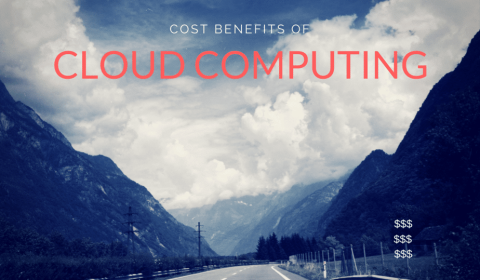The Cost-Benefit argument for Cloud Computing
THE CLOUD is a buzzword invented a few years ago and is loosely defined as internet based computing. As time has gone on, Cloud Computing is more accepted and less mysterious and is heard in many everyday conversations. This article discusses cloud software and does not go into cloud infrastructure, that is an article for another time.
Your first consideration with Cloud computing will be your internet speed and reliability.

If you have great internet, consider Cloud computing. Moving to O365 exchange from on-premise exchange will save you pennies. ‘Bang for Buck’, O365 Exchange or Business Premium works out financially efficient compared to on-premise Exchange and Microsoft Office.
If you have so-so internet, please give us a call on 1300500577. We can run a couple of tests to determine if your internet can be improved and your Cloud suitability.
For on-premise consider the costs of Exchange server, software, installation and hardware; ongoing server maintenance, ongoing server updates and security patches; specialist technician education, and downtime. Also include costs of Microsoft office software; Microsoft licensing and OEM rules; and technical issues with various different versions.
Versus O365 Cloud email, at $67 ex per mailbox per year. Full O365 Business Premium (Full Office plus a mailbox) is just $190 ex per user per year. With O365, you will always have the latest versions, all users are up to date and less downtime. Business IT Support technicians available to efficiently and effectively improve your workflow processes. Making your business IT infrastructure work for you and not the other way around.
Contact us to work out how much we can save your business on IT costs this year. Consider using part of the money you save to get better internet.
Some definitions follow:
On-Premise
On-premise, is when all software is installed and managed on a physical server in your business server room. This software is accessed by a local network (or by remote workers with WAN). IT Support Technicians are required to manage the server hardware; maintain the server operating systems; keep software licensing up to date; check data integrity; backups and security. Server hardware will need upgrading or replacing every 4-5 years. A server will have the same maintenance requirement even if you downsize staff. You own the software, and pay annual maintenance fees at a reduced rate.
Internet speed will effect emails, but all software and workflow will be as fast as your local network. A local power failure and access to a laptop allows work to continue if the software and data are stored on the laptop. You will not have access to your data files stored on the server; exchange email will not work; some software will not work; there will be no network or access to printers. An internet dongle will not improve access in this situation. Remote access (traveling and remote employees) will depend on internet at the source and destination.
Examples of On-Premise computing are Microsoft Exchange, Microsoft Office, NAS file storage or backup, etc.
Cloud Computing
CLOUD COMPUTING, is when all software is installed and managed on servers in another location, another state, even another country. Access is purely by using the internet. Your business does not have to worry about maintaining the server, or operating systems, intrusion detection, or licensing. You pay an annual or monthly subscription which is constant, however you can reduce quantities (depending on your subscription terms) to pay only what you are using. You have a support channel if there is a support issue, usually your Business IT Service Agents will liaise on your behalf. However support is via chat windows, emails or forums and rarely a phone number to call. Support is somewhat tedious due to the time difference between Australia and the rest of the world.
Internet speed will effect every single segment of workflow. The more cloud based software in use by the business, the more the internet speed impedes work flow. A local power failure and access to a laptop with an internet dongle will see most business continue to perform as per usual. There will be no printer access, however laptops will be able to collaborate. Remote access (traveling and remote employees) only depends on internet speed of the access of the user. (As we assume that Cloud Servers have strong and reliable internet).
Examples of cloud computing are O365 Exchange, O365 Business Premium, Dropbox, etc.